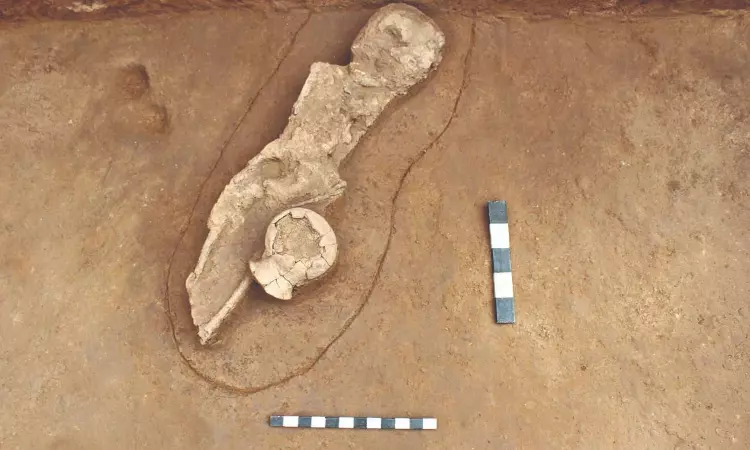In a first, Neolithic child burial site found in TN
This is also the first time burnished wares have been reported from this part of the State.

The buried child found during the excavation at Chettimedu Pathur
CHENNAI: In a first-of-its-kind finding in Tamil Nadu, the Department of Ancient History and Archaeology of the University of Madras discovered child burial from the Neolithic period in Chettimedu Pathur village near Maduranthagam in Chengalpattu. This is also the first time burnished wares have been reported from this part of the State.
Due to soil erosion and human activity, material remains like hopscotch, bone tools, brickbats, and different types of potsherds in the archaeological mound were exposed. As part of the excavation that began on February 5, four trenches (CTM 1, 2, 3 and 4) were laid to understand the cultural sequence of the site. Among them, two have been completed and excavation at the other two is in the last stage.
Based on preliminary analysis, the material evidence and layers could be divided into five cultural periods: First from the Neolithic period, second from the Iron Age, third from the Early Historic period, fourth from the Early Medieval period, and fifth from the Medieval period from when red ware dominated. A Ceylon Man-type coin from the Chola Period was collected from the last one.
From the Neolithic period, many body sherds of burnished red ware, burnished grey ware, and red ware with elongated neck and wide mouth were found.
An important finding from CTM-3 is a child burial, with a pot placed beside the body. “This is the first time such a child burial has been identified in Tamil Nadu. It is believed to be from 5000 BC,” said J Soundararajan, associate professor and head, School of Historical Studies.
“The child could be aged between 9 to 11, as the mandibular deciduous first molar tooth has not started to shed,” he added.
The head is placed at the north and the body is oriented to the south, with the face turned towards the West. This practice has been followed since the Protohistoric period. Next to it is a pot that is a typical pottery from the Neolithic period.



